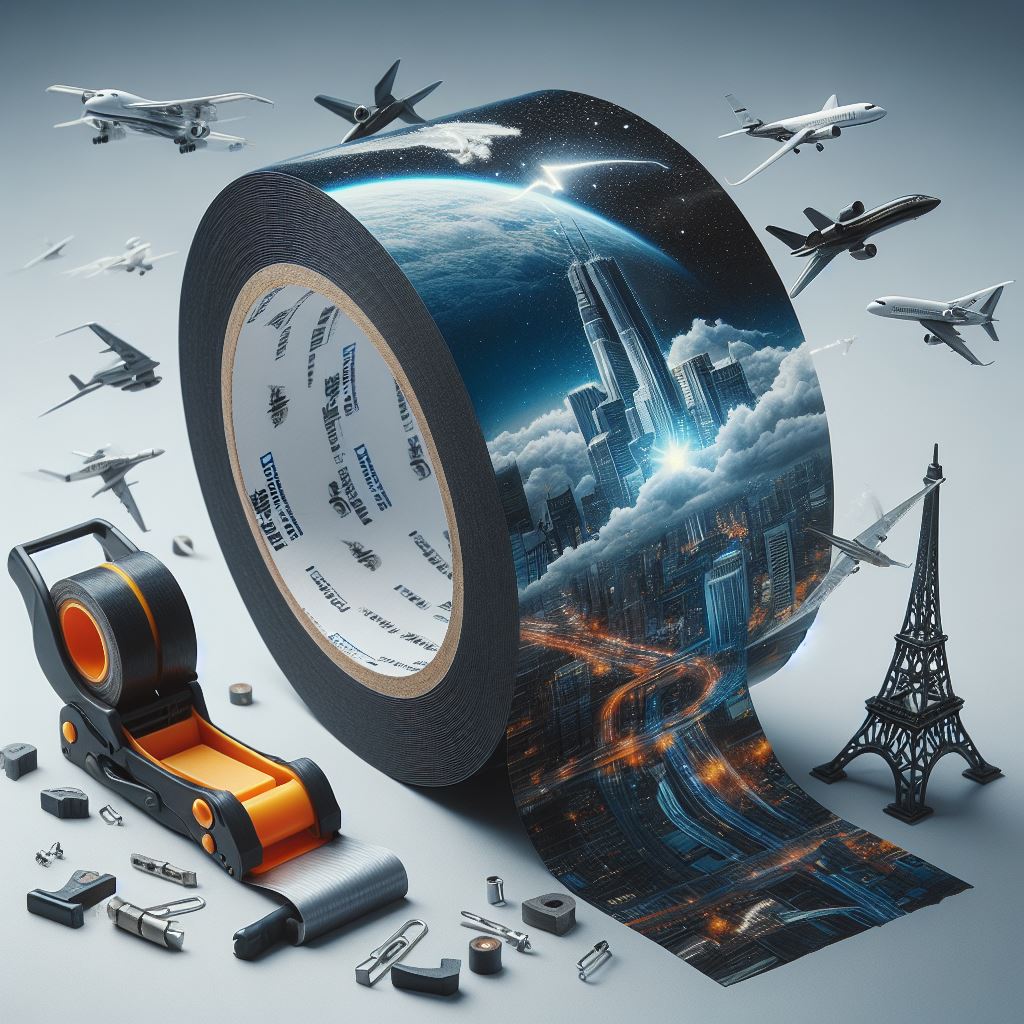Duct Tape vs. Gaffer Tape: The Sticky Showdown!

Me: Generate an image with a roll of duct tape next to a roll of gaffer tape against a white background.
Ai: I got this!
We’ve all seen them, those rolls of trusty tape promising to fix anything in a pinch. But when it comes to the world of adhesives, there’s more than just the classic silver standby. Enter gaffer tape, the lesser-known cousin with a surprising range of talents. Today, we’re peeling back the layers (metaphorically, of course) to uncover the strengths and weaknesses of each tape, helping you to understand the difference between the two.
Duct Tape: The All-Around MacGyver
Duct tape, the ductwork darling, lives up to its name by being incredibly strong, waterproof, and surprisingly versatile. Need to patch a leaky hose? Duct tape. Secure a tarp in a storm? Duct tape. Build a cardboard spaceship for your cat? You guessed it, duct tape. Its aggressive adhesive makes it ideal for permanent fixes and outdoor applications. However, like the overenthusiastic friend who shows up uninvited, duct tape can leave a sticky residue and isn’t the most subtle accessory for delicate surfaces or temporary application.
Gaffer Tape: The Showbiz Secret Weapon
Gaffer tape, named after the “gaffers” who ensure seamless film productions, shines in the world of temporary applications and delicate materials. Made with a cloth backing and gentler adhesive, it removes cleanly, leaving no residue behind. This makes it perfect for securing cables on stage, taping actors without damaging costumes, and even marking lines on basketball courts. Its matte finish avoids unwanted reflections, and its variety of colours allows for discreet blending. Think of it as the stealthy ninja of the tape world.
Real-World Examples: Where Gaffer Tape Shines
At first glance a temporary tape seems less useful that a strong adhesive tape ment to hold stuff in place. In the media production environments like concerts, live events or film shoots are by their very nature, short. Certainty when compared to the intended job of holding ducting in place. The tape invented to service this industry has found wide appeal as the awareness of its versatility grows.
- DIY: You need to hold two parts together while you glue or screw them. When you done you want the tape gone, all of it. Masking tape is too weak and tears, duct tape can ruin the surface finish. You will find yourself most often reaching for your roll of gaffer tape.
- Camping: You setting up camp and you trying to secure two things to each other, like two tent poles which you have now discovered no longer slot into each other. In camping, rope is often used to secure items. Knots are fun, undoing knots… much less so. Tape is a great solution especially for metal surfaces like poles which rope can never grip on. Everything in a camp setup is temporary, use a tape made to come off.
- Cars: Your car bumper falls off, you need to reattach it so you can drive to a mechanic or parts shop for those little clips you are now missing. Tape holds really well to the shiny body of the car as well as the bumper which may be a different material. When you remove the tape you want your body paint to stay attached to the car. You also really don’t want to clean the glue gunk left behind which require harsh solvents.
- Music Festivals: Imagine thousands of cables snaking across a concert stage, a tripping hazard waiting to happen. Gaffer tape is the hero, keeping cables secure and audiences safe without leaving a trace.
- Film Sets: Delicate props, expensive costumes, and the pressure of capturing that perfect shot – gaffer tape steps in, securing lights, marking positions, and holding things together without leaving a mark.
- Photography Studios: From diffusing light to creating backdrops, gaffer tape’s versatility and clean removal make it a photographer’s best friend.
Remember, gaffer tape is not used as a temporary application because its bond is weaker, it is just made with better quality natural rubber adhesive. Other tapes become brittle and the adhesive hardens especially after sun exposure. This makes removing them hard and has more to do with their deterioration rather than their grip.
Some Examples of how Duct Tape and Gaffer Tape Differ
Gaffer tape is thicker so it curls in on its self less.
When torn by hand Gaffer tape is neater.
Gaffer tape is less shiny with a matt surface.
Gaffer tape does not leave a sticky residue.
Here is a table highlighting how the two differ.
| Feature | Duct Tape | Gaffer Tape |
| Backing Material: | Polyethylene or polypropylene film | LDPE coated Cloth |
| Thickness: | 125 microns | 300 microns |
| Adhesive: | Rubber-based, pressure-sensitive | Natural Rubber, pressure-sensitive |
| Adhesive Strength: | High | Moderate to High |
| Elongation at Break: |
180% | 10% |
| Temperature Range: | -40°C to 93°C | -30°C to 90°C |
| Weather Resistance: | Poor | Good |
| Residue Upon Removal: | Significant | None |
| Designed Application: | Duct sealing | Holding cables, securing props, marking floors, photography, DIY, automotive |